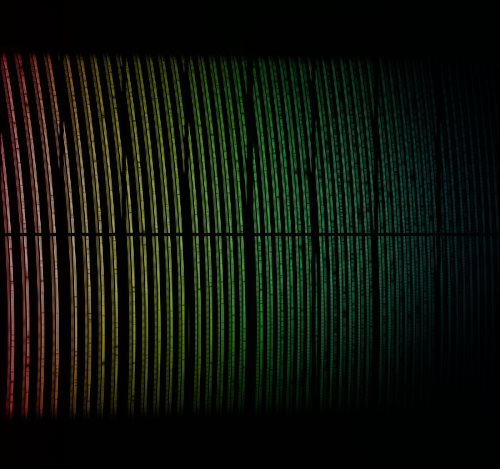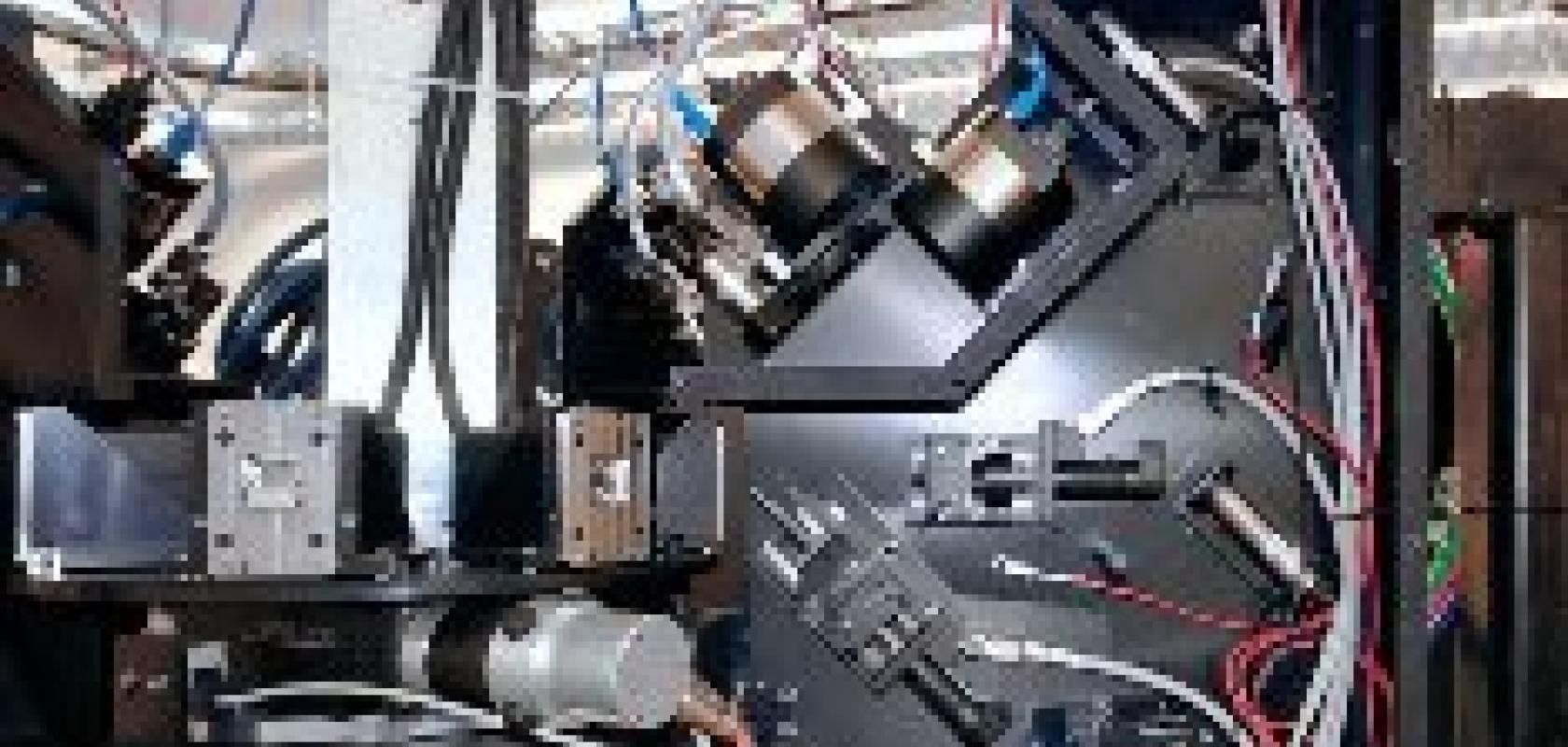The Echelle SPectrograph for Rocky Exoplanet and Stable Spectroscopic Observations (ESPRESSO) has made its first observations. Installed on ESO’s Very Large Telescope (VLT) in Chile, ESPRESSO will search for exoplanets by looking at the minuscule changes in the light of their host stars. The instrument represents the first time light from all four VLT telescopes can be collated, achieving the light collecting power of a 16-metre telescope.
ESPRESSO has achieved first light on ESO’s Very Large Telescope (VLT) at the Paranal Observatory in northern Chile. This new, third-generation echelle spectrograph is the successor to ESO’s hugely successful HARPS instrument at the La Silla Observatory. HARPS can attain a precision of around one metre per second in velocity measurements, whereas ESPRESSO aims to achieve a precision of just a few centimetres per second, thanks to advances in technology and its placement on a much bigger telescope.

Image shows spectral data from the first light of the ESPRESSO instrument. The light from a star has been dispersed into its component colours. This view has been colourised to indicate how the wavelengths change across the image, but these are not exactly the colours that would be seen visually. Close inspection shows many dark spectral lines in the stellar spectra and also the regular double spots from a calibration light source. The dark gaps are features of how the data is taken, and are not real. Credit: ESO
ESPRESSO can detect tiny changes in the spectra of stars as a planet orbits. This radial velocity method works because a planet’s gravitational pull influences its host star, causing it to 'wobble' slightly. The less massive the planet, the smaller the wobble, so for rocky and possibly life-bearing exoplanets to be detected, an instrument with very high precision is required. With this method, ESPRESSO will be able to detect some of the lightest planets ever found.
The test observations included observations of stars and known planetary systems. Comparisons with existing HARPS data showed that ESPRESSO can obtain similar quality data with dramatically less exposure time.
'Bringing ESPRESSO this far has been a great accomplishment, with contributions from an international consortium as well as many different groups within ESO: engineers, astronomers and administration. They had to not just install the spectrograph itself, but also the very complex optics that bring the light together from the four VLT Unit Telescopes,' commented Instrument scientist Gaspare Lo Curto (ESO).
Although the main goal of ESPRESSO is to push planet hunting to the next level, finding and characterising less massive planets and their atmospheres, it also has many other applications. ESPRESSO will also be the world’s most powerful tool to test whether the physical constants of nature have changed since the Universe was young. Such tiny changes are predicted by some theories of fundamental physics, but have never been convincingly observed.
When ESO’s Extremely Large Telescope comes online, the instrument HIRES, which is currently under conceptual design, will enable the detection and characterisation of even smaller and lighter exoplanets, down to Earth-like planets, as well as the study of exoplanet atmospheres with the prospect of the detection of signatures of life on rocky planets.


